
What is Sea Breeze, and why are drills important for deterring Russian forces in Black Sea?
On September 11, the Sea Breeze 23.3 international exercises started, organized by Romania and the United States, with Ukraine joining as a participant. What is their significance?
Espreso will tell more on their origin, why Sea Breeze is held, and what to expect from this year's exercises.
The text will delve into:
- What is Sea Breeze and its history
- Why Sea Breeze is being conducted and why Russia is afraid of them
- What to expect from this year's Sea Breeze exercises
- The Black Sea as a hostage of the Russians that needs to be rescued
What is Sea Breeze and its history
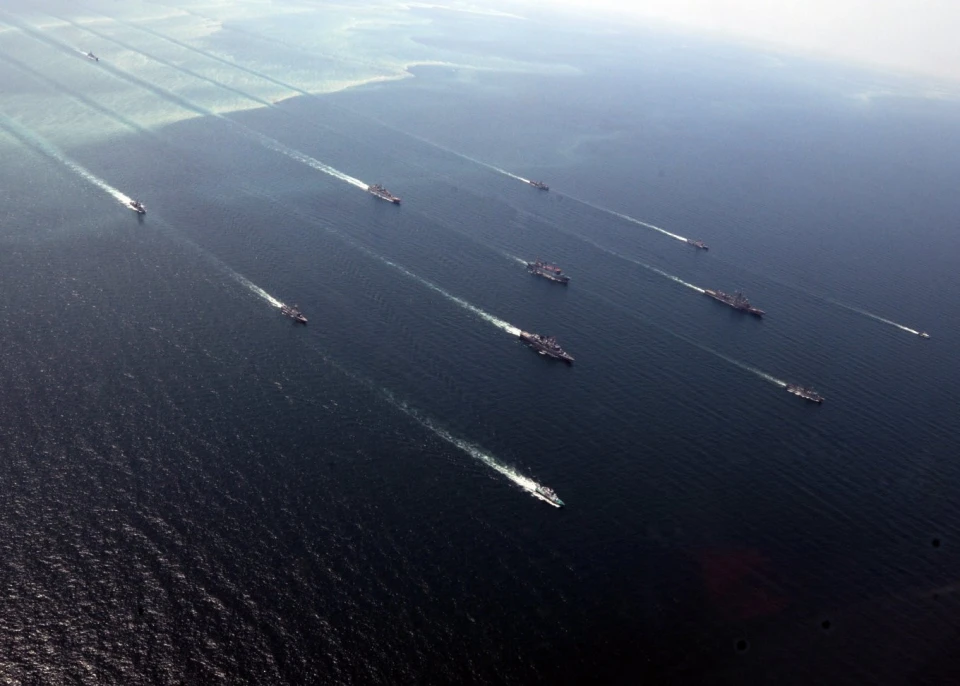
Photo: Ukraine's Defense Ministry
Sea Breeze drills are annual international military exercises that take place regularly in accordance with the Memorandum of Understanding and Cooperation in Military Relations between Ukraine and the United States, which was signed between the two Defense Ministries in 1993.
The first such exercises took place in late August 1997. They were held near Donuzlav (Crimea) and at the Shyroky Lan training ground (southern Mykolaiv region). The sea phase took place in the northwestern part of the Black Sea. Six countries took part in the command post exercises.
Later, the Sea Breeze international exercises were held almost every year in the Black Sea. However, due to various political circumstances (in particular, MPs have to approve the decision to allow foreign troops to enter the country), the exceptions were: 2000, 2003, 2006, and 2009.
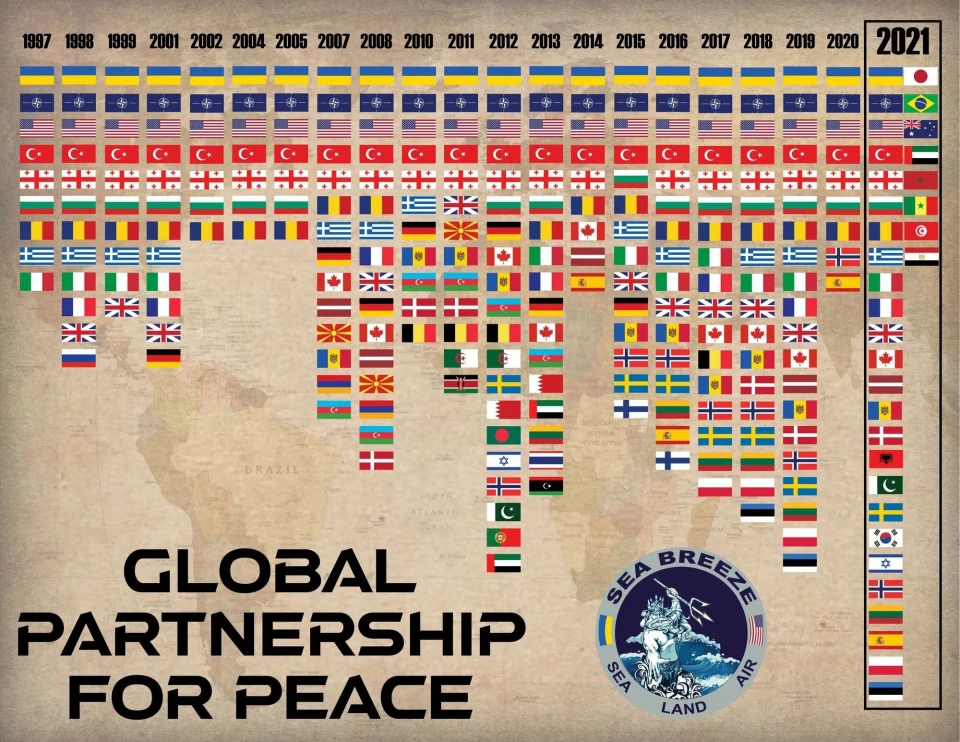
Photo: Sea Breeze
Interestingly, in 1998, Russia also took part in the exercise, represented by three warships.
In 1999 and 2002, the maritime phase of the exercise was held in the Mediterranean Sea. The anniversary Sea Breeze in 2007 lasted more than three weeks and was attended by thousands of military personnel from 11 countries. In 2008, 2011 and 2012, 17 countries joined the exercise.
In 2018 and 2019, 19 countries and thousands of troops joined the exercises. The 2021 exercises were the largest yet, as evidenced by the record number of participating countries - 5,000 troops from 32 countries. The exercises took place in the Black Sea, near the cities of Odesa and Ochakiv, in the Dniester Estuary, near the Kinburn Spit, Zmiinyi and Pervomaiskyi Islands, in the Danube River Delta, and other parts of Ukraine.
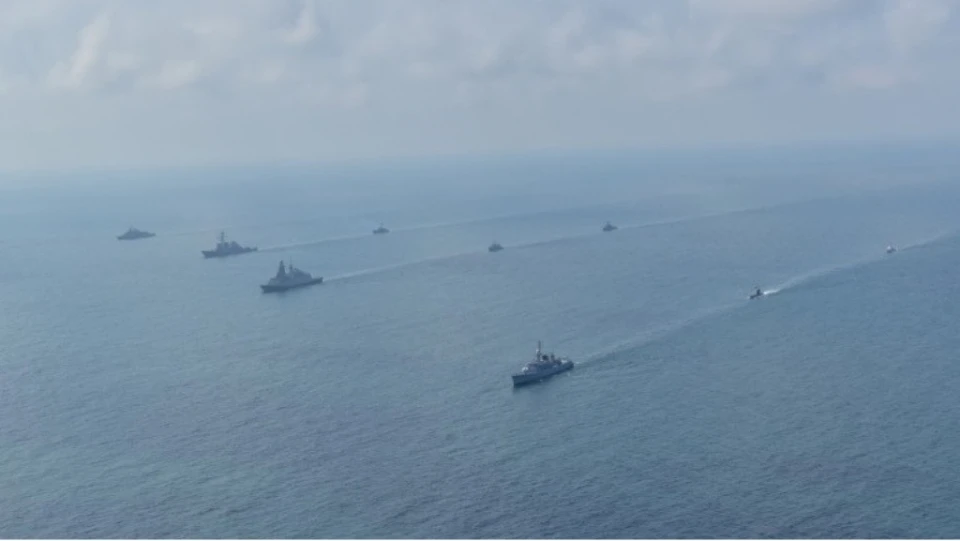
Photo: Ministry of Defense of Bulgaria
Last year, due to the full-scale war, Sea Breeze did not take place in its traditional form. Instead, they were held in the Bulgarian waters of the Black Sea. The navies of 11 NATO member states took part in the training at sea. Representatives of the navies of Bulgaria, Albania, Belgium, France, Greece, Italy, Latvia, Poland, Romania, the United States, Turkey, and the United Kingdom, as well as the NATO Naval Command were involved. In total, 24 warships and auxiliary ships and boats, 5 aircraft, 4 helicopters, and 1,390 servicemen were involved.
Why Sea Breeze is held and why Russia is afraid of it
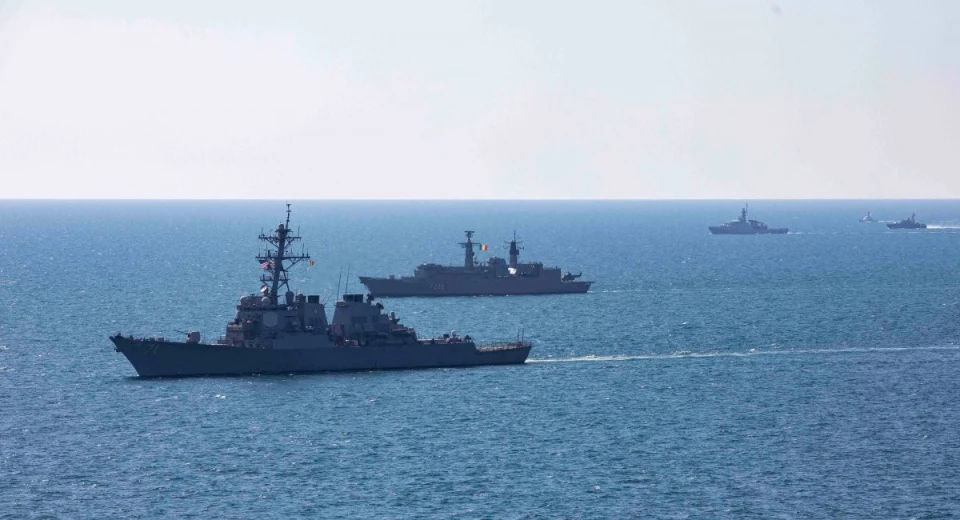
Photo: Ministry of Defense of Ukraine
Sea Breeze is an important part of the strategic effort to maintain and enhance security and stability in the Black Sea region. It brings together NATO Allies, partner countries and other participants. It provides them with the opportunity to jointly improve skills and increase military readiness to meet various current challenges (in the 2000s, this often included the fight against international piracy).
The main goal of the exercises, announced in the 1990s, is to improve cooperation and coordination between the countries of the Black Sea region and partner countries, and to practice maneuvers at sea and on land. Under the agreement, Ukraine provides military and civilian infrastructure on the Black Sea coast, while the United States supports the exercises financially and provides assistance with equipment and supplies.
Until Vladimir Putin came to power, Russia did not oppose these exercises, but rather participated in them (1998). However, since the early 2000s, the Kremlin's rhetoric has changed. Through the "fifth column" Russia began to influence Ukrainian opinion. For several years, Ukraine's leftist and pro-Russian forces opposed Sea Breeze exercises, claiming that they were "NATO expansion." In 2006, the largest protests took place, organized by the Communist Party and Vitrenko's Progressive Socialist Party of Ukraine with the help of Russian television. They even managed to block US ships and military personnel in Feodosia for a while. And in 2008, Russia officially expressed concern over what they considered to be the "anti-Russian nature" of the exercises. In 2019, 2020, and 2021, the Russian Navy repeatedly conducted provocations during Sea Breeze. All of this was done because of Russia's imperial ambitions, which considered and still mistakenly considers the Black Sea to be exclusively its "Russian Sea."
What to expect from this year's Sea Breeze exercises
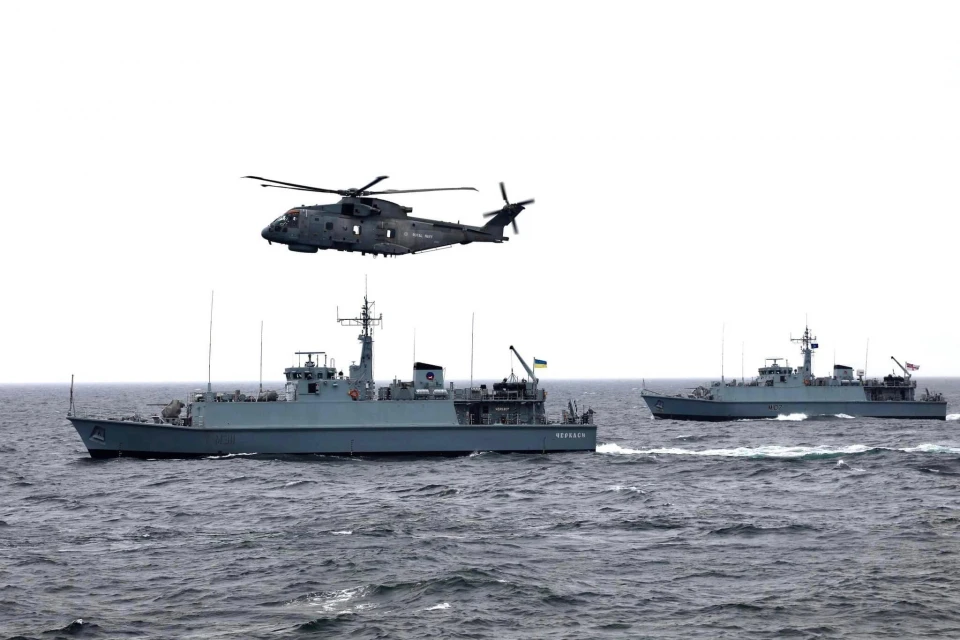
Photo: Ministry of Defense of Ukraine
This year, it was not the first Sea Breeze drills. From June 18 to July 7, a set of exercises was held off the coast of Scotland as part of the Sea Breeze series of exercises, involving 18 countries.
The exercises were conducted as part of tactical groups, including the Ukrainian Navy's Cherkasy and Chernihiv mine countermeasures ships (formerly owned by the Royal Navy), underwater demining teams and underwater unmanned vehicles. In total, the maritime component included 8 mine countermeasures ships, a hydrographic survey vessel and a coast guard ship.
From September 11 to 15, international exercises Sea Breeze 23.3 began in the northwestern part of the Black Sea and the Danube Delta. This index itself indicates a certain unplanned nature, which is likely due to frequent Russian attacks on the port infrastructure of Odesa region and, in particular, the Danube estuary.
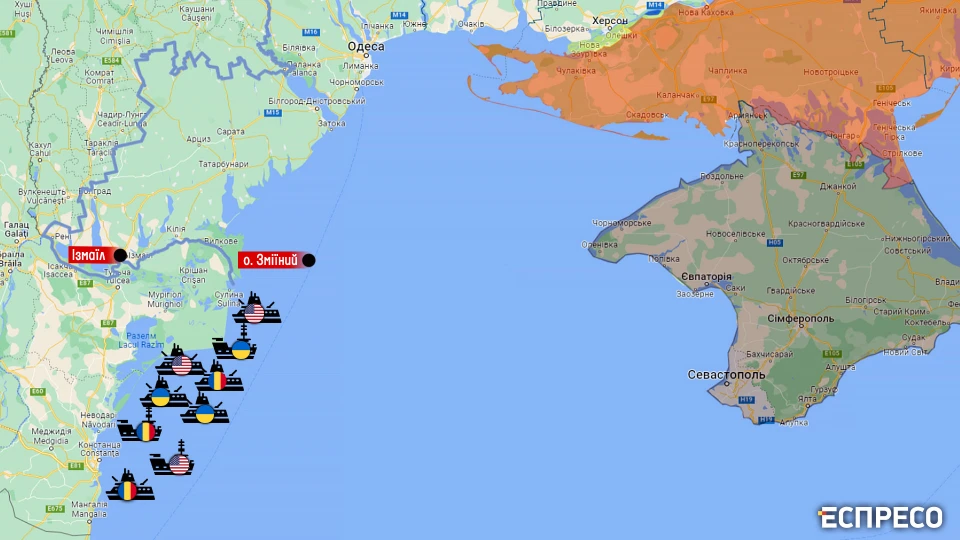
Photo: Espreso collage
Sea Breeze 23.3 is nicknamed Storm breeze. More than 200 sailors from Romania, the United States, Bulgaria, France, the United Kingdom, Turkey, and Ukraine are taking part in the exercise. The main objective of Sea Breeze 23.3 is to train in mine clearance, just as in the case of the summer training in the UK.
"The exercises are conducted to develop operational and tactical interoperability in the field of countering explosive ordnance, in particular, sea mines. This should ensure freedom of navigation," the Romanian Defense Ministry said in an official communiqué.
Therefore, the Romanian forces, which formed the basis of the exercise, are represented by the minesweeper Slt. Alexandru Axente (DM-30), diving and other boats. The United States is participating in the exercise with a P-8 Poseidon anti-submarine aircraft, as well as boats and divers, while other countries have sent specialists and staff officers.
According to Defense Express experts, if attacks on Ukrainian port infrastructure are at least temporarily halted because of these exercises, it will mean success on the part of the allies. However, given that the Russian Federation is also launching Shaheds on the territory of Romania, various dangerous scenarios may arise.
Russia has not yet officially reacted to the multinational exercises in the Black Sea. However, Natalia Humeniuk, Operational Command South'a press center head, said that the Russian military sent a reconnaissance UAV to the area where Sea Breeze 23.3 is being held on September 11.
Last year, Maksym Palamarchuk, an expert at the National Institute for Strategic Studies and author of Naval Power and Its Limits, noted that the presence of a certain contingent, a grouping of NATO forces, is likely to reduce the appetite of Russians for any possible risks and provocations against grain ships.
"I understand that what is more important is the political effect, the demonstration that even Russia's full-scale aggression against Ukraine could not disrupt the NATO Sea Breeze exercises in the Black Sea, which have been regularly held for decades," the expert said.
The Black Sea as a hostage of the Russians that needs to be rescued
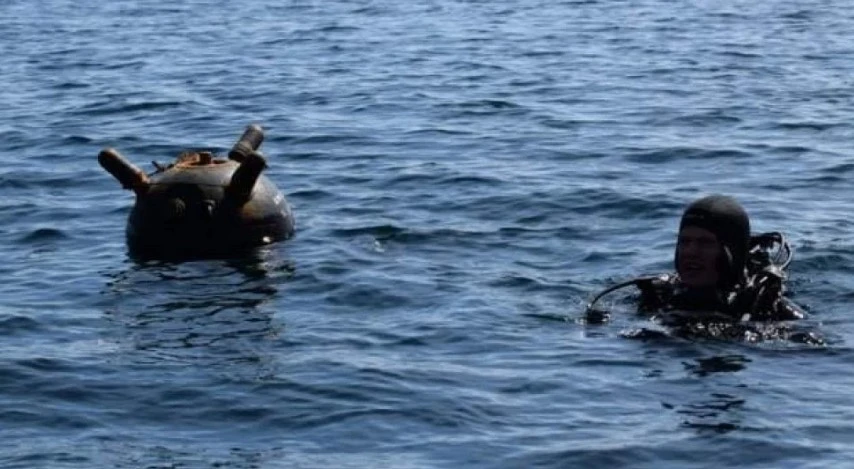
Photo: Romanian Ministry of Defense
Due to Russia's full-scale war against Ukraine, the Black Sea is no longer a safe place for normal navigation. Moreover, Russian mines have begun to be washed ashore not only in Ukraine, but also in Romania, Bulgaria, and Turkey. The destruction of the Kakhovka hydroelectric power plant by Russians led to an environmental disaster, when hundreds of tons of grease, oil and other substances harmful to flora and fauna were released into the sea. And the constant radar activity of Russian warships has led to the death of many Black Sea dolphins. The same ships pose a threat to civilian vessels, and Russians open warning fire on them.
All of this suggests that the aggressor country, the Russian Federation, is terrorizing the Black Sea and the Black Sea coast. That is why international exercises of NATO and partner countries such as Sea Breeze are the force that can deter the aggressor from its barbaric goals and help restore balance in the region. In addition, until Ukraine has built its own high-quality navy, the support of partners is key in the fight against Russia's imperial ambitions.
- News














































